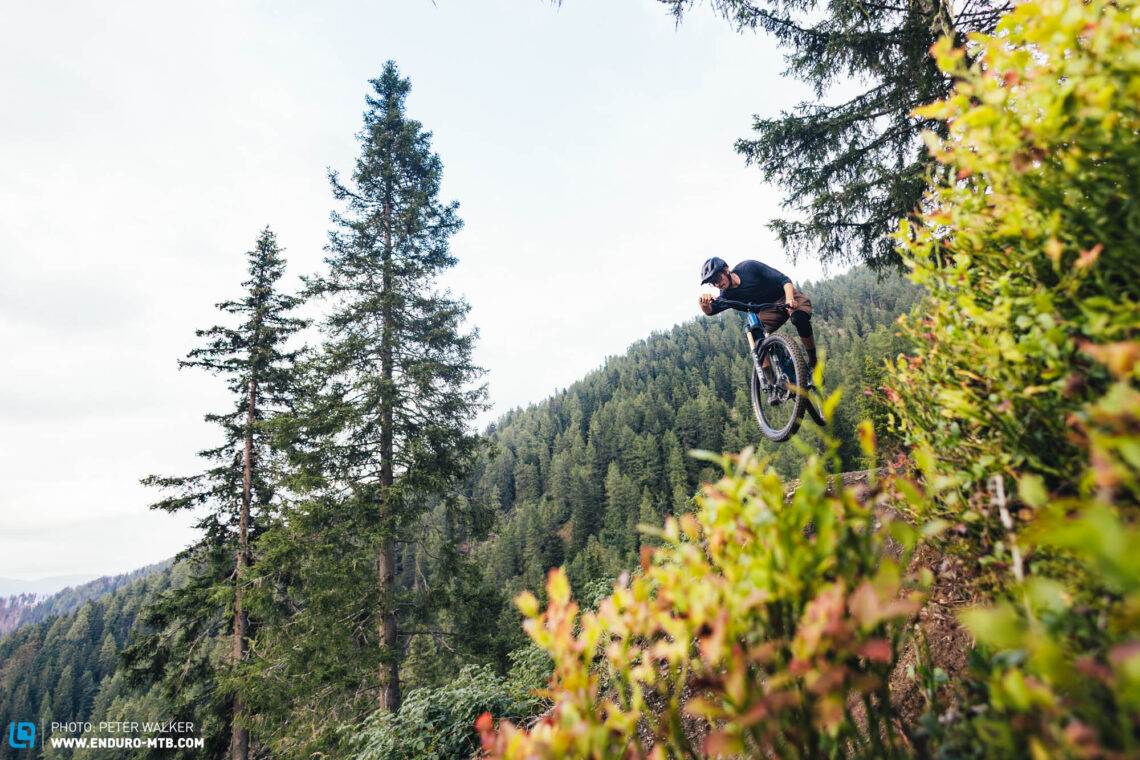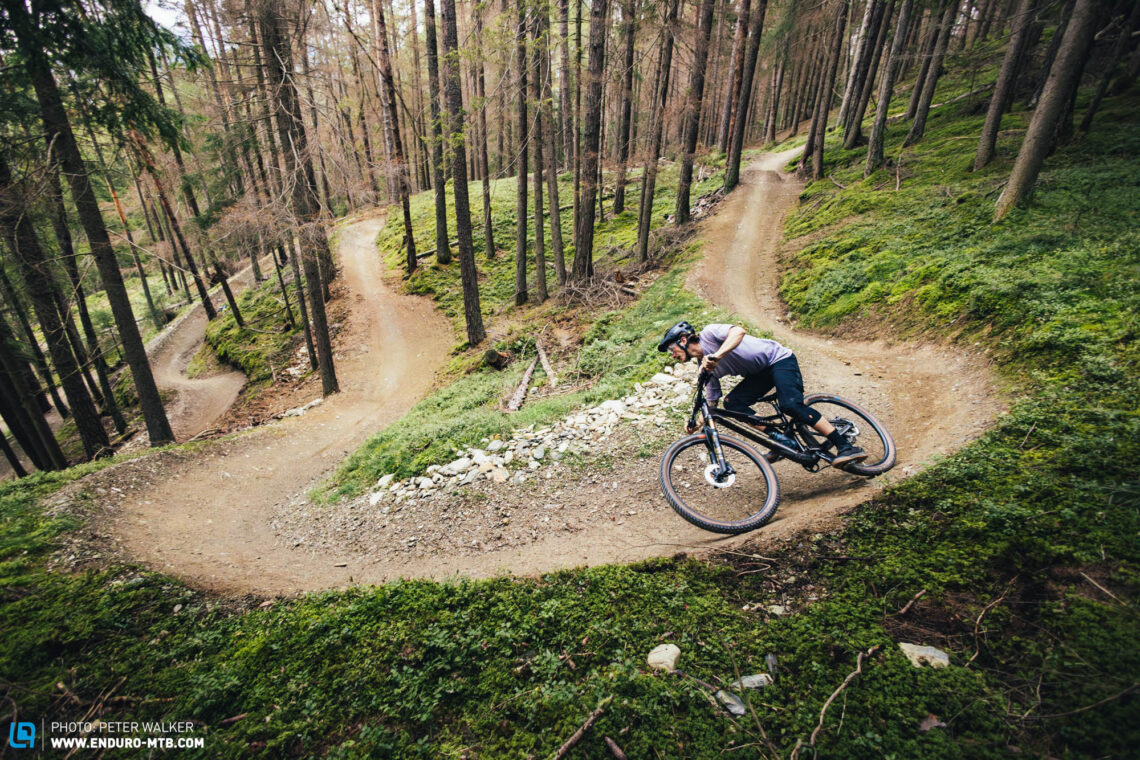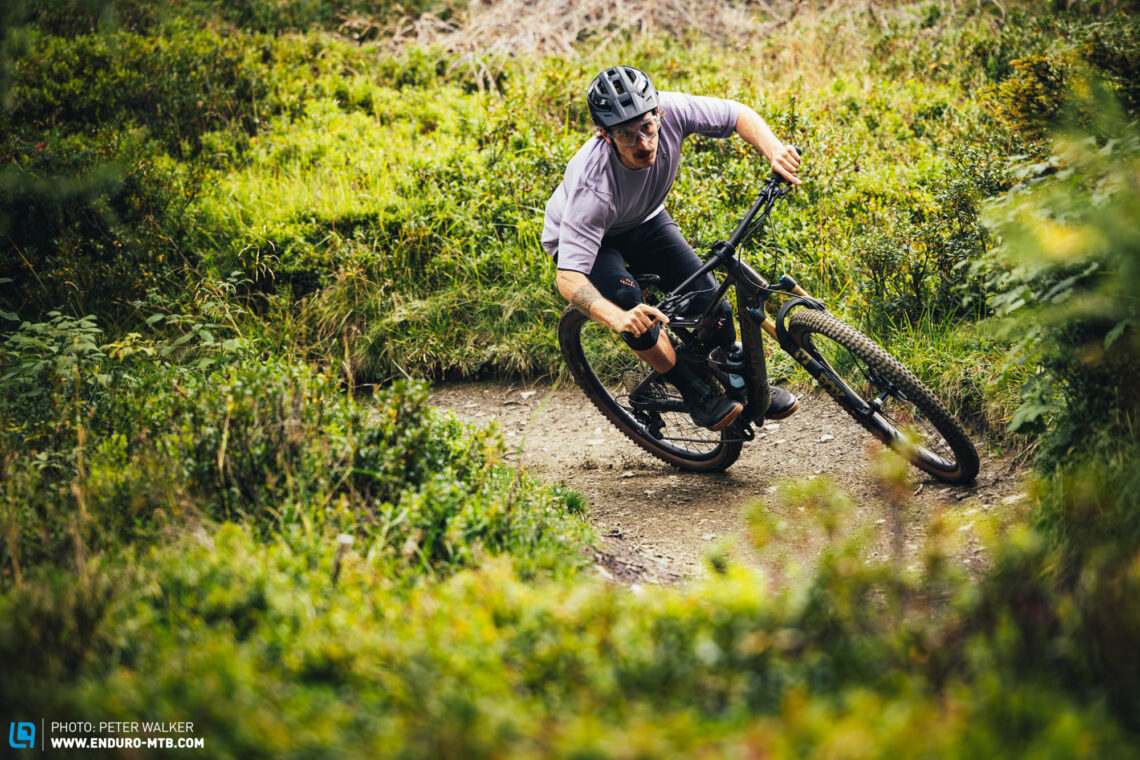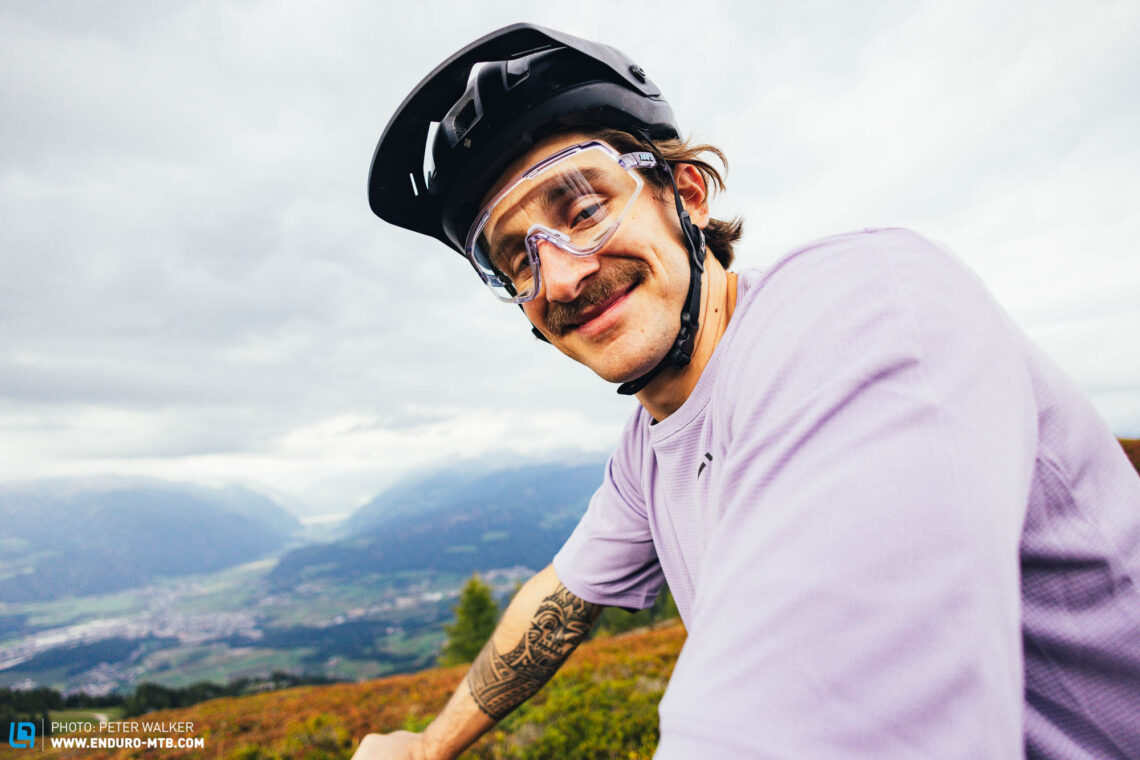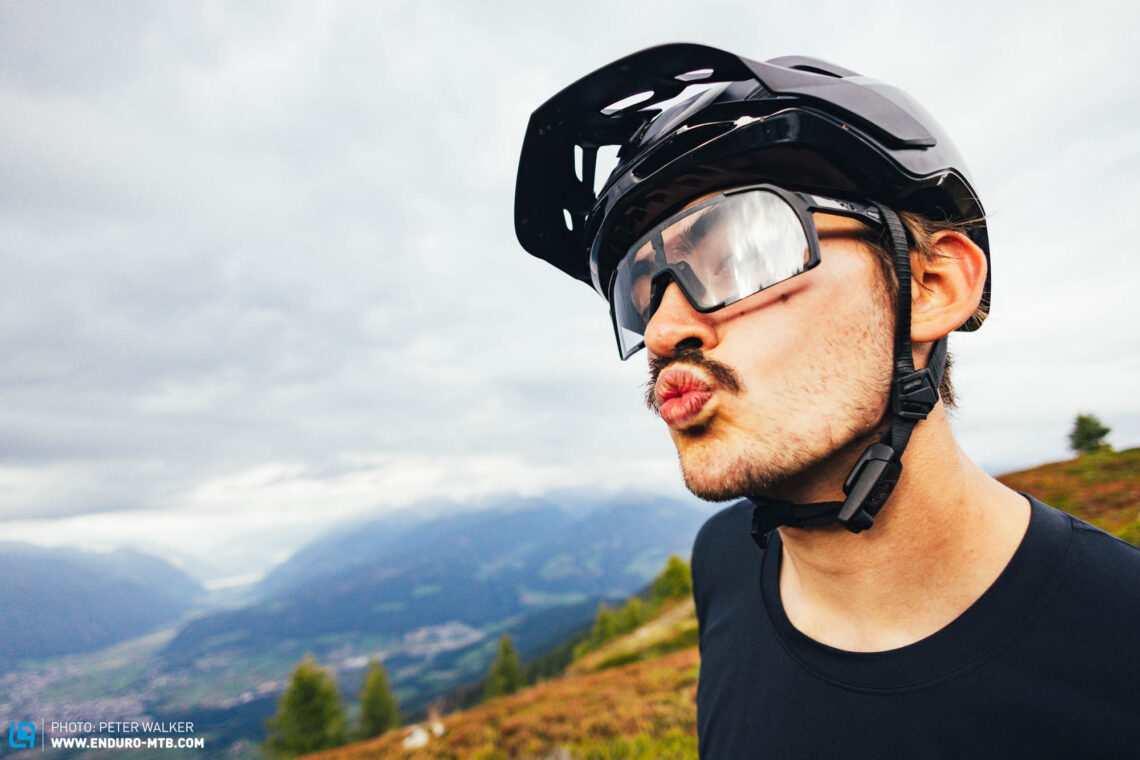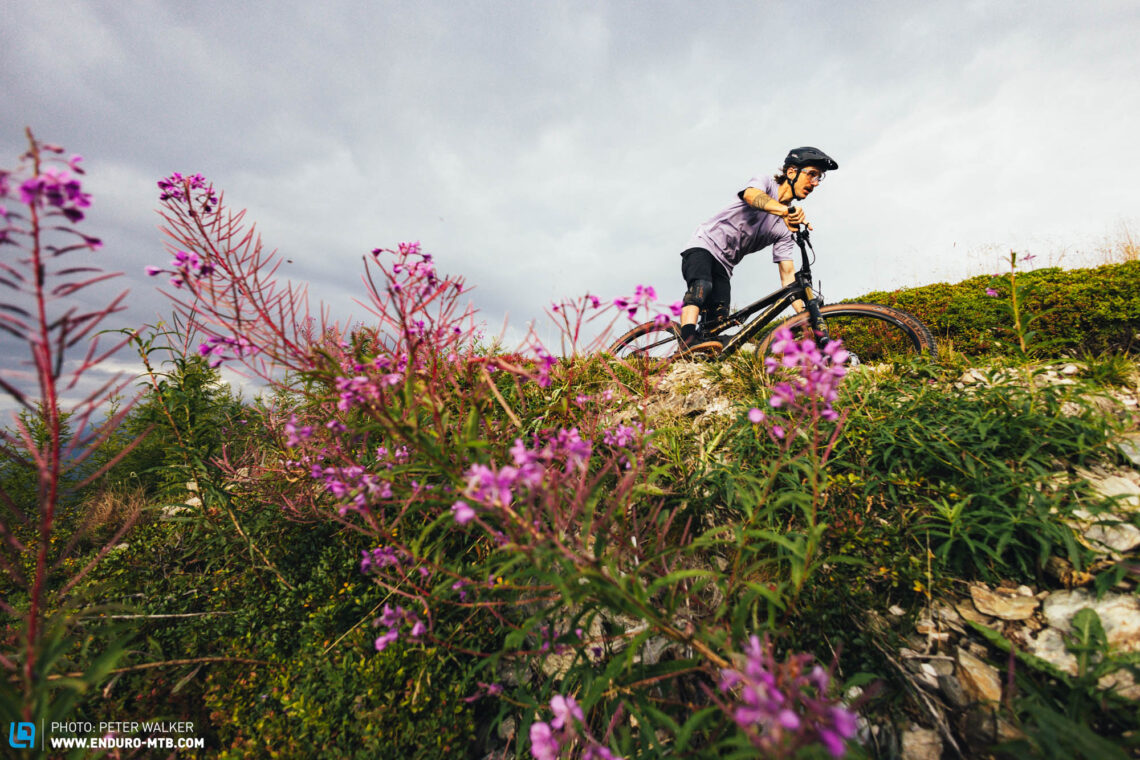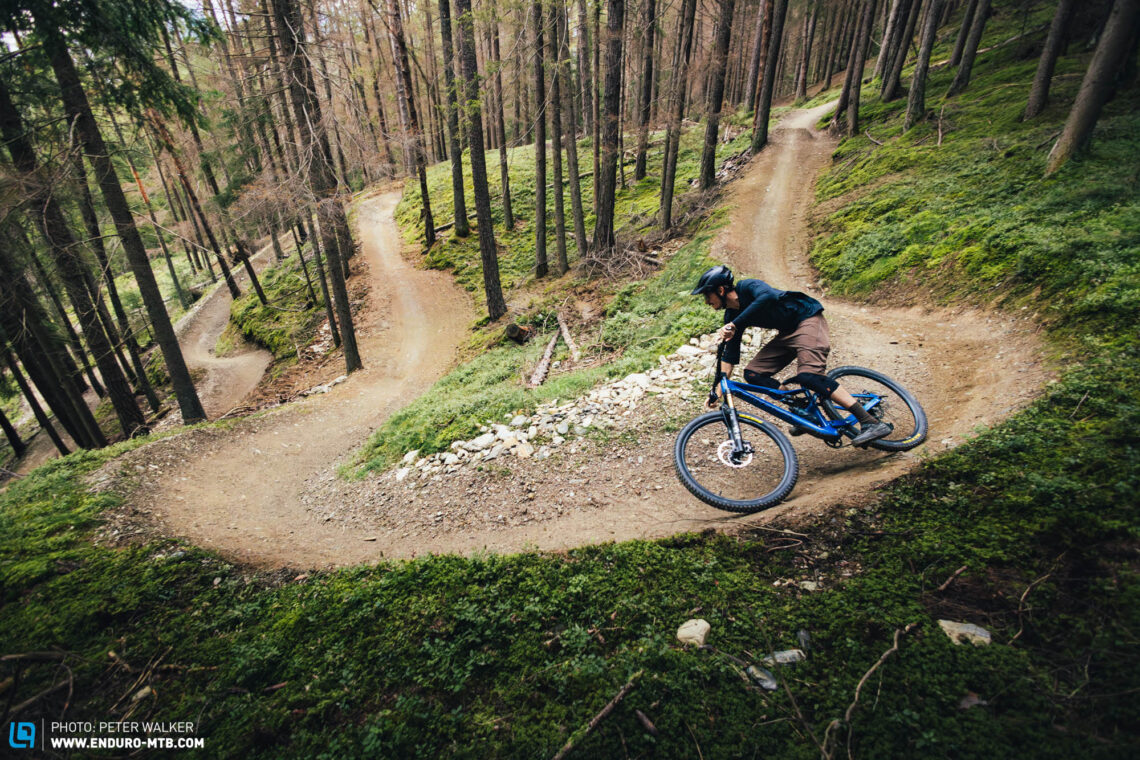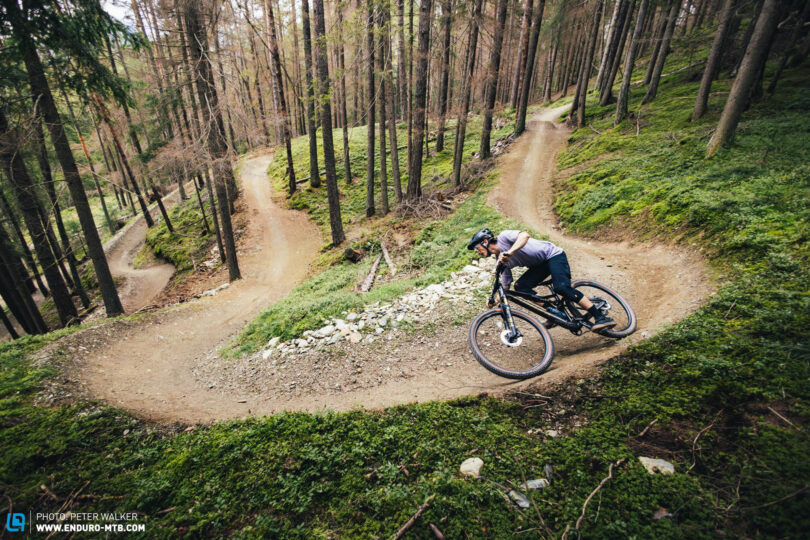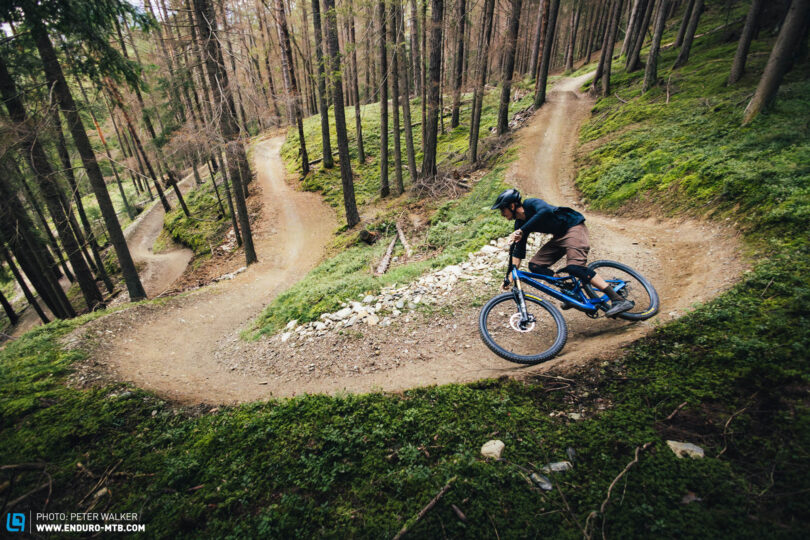With trail bikes becoming increasingly more versatile, their range of applications is broadening fast. For exactly this reason, Orbea have launched not one, but two versions of their trail evergreen: the Occam SL and Occam LT. Sharing the same identical frame, the two variants are meant to cover a huge range of applications, from epic Alpine adventures to wild bike park sessions. But does the concept work? We tested both the SL and LT versions to find out!
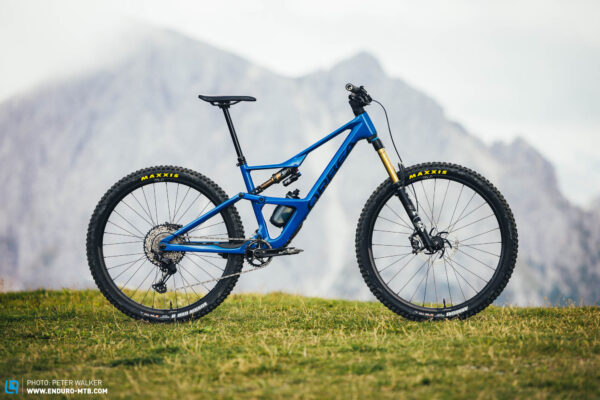
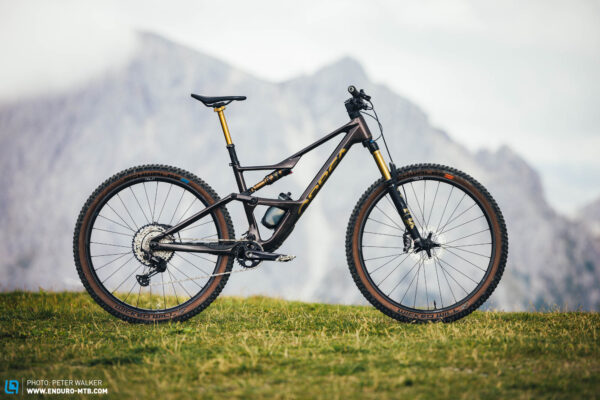
Without a doubt, trail bikes cover the widest range of applications, thus serving the greatest variety of mountain bikers, from XC riders who want a more capable bike in their bike shed to downhill racers who need a playful bike for muscle-supported training rides, and of course those of us whose budget or storage space only allow for one bike to do it all. However, the requirements are so different that it’s almost impossible to cover them all with one bike. And that’s exactly why Orbea have created two different versions of their Occam trail bike for the 2024 season. The SL model generates 140 mm of travel front and rear, while the LT variant combines 160/150 mm of travel. Both bikes share the same frame platform but employ different suspension, shock links and other small parts.
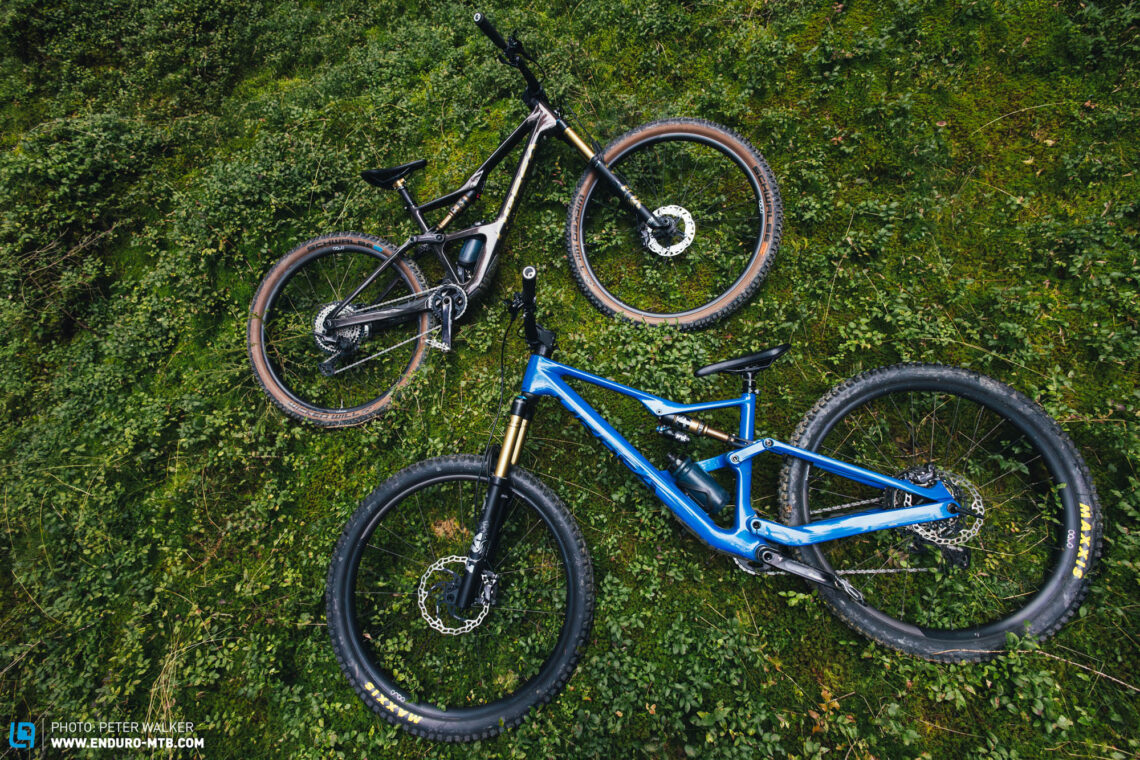
The short-travel variant is intended for extended backcountry adventures and comes standard with a remote lockout that allows you to stiffen up both the fork and shock at the push of a button. Our test bike tips the scales at 12,3 kg. The LT model, on the other hand, weighs in at 15.1 kg and is trimmed for trail performance. For this test, we picked the M10 spec variant of both bikes. While this might not be the flagship model in the Occam range, it’s the one that in our opinion strikes the best price-performance ratio, with the only difference to the top-spec model being the cable-operated drivetrain. Both the SL and LT M10 variants retail at € 5,999. You can either buy the new Occam directly from your local Orbea dealer, or configure it online using Orbea’s extensive MyO configurator and get the new bike sent to a dealer.

The new Orbea Occam 2024 in detail
The Occam was first introduced in 2008 and has been an integral part of Orbea’s portfolio ever since. With the previous iteration, which was launched in 2019, Orbea added a cross brace between the seat tube and down tube, which the latest 2024 model has inherited. However, the new Occam relies on a more modern design language, with a straight-lined frame silhouette and updated geometry.
Like its predecessor, the new 2024 Occam is available either with an alloy or a carbon frame, with both versions featuring Orbea’s proprietary LockR storage compartment in the down tube – you might recognise this from the Rallon. The compartment can be opened with the help of an easily accessible lever and offers enough space for a spare tube, tire levers and two CO2 cartridges. These can be stored safely and securely without rattling thanks to the two waterproof bags provided for this purpose. Orbea also hide a mini tool with four Allen keys (2–5 mm) inside the main pivot of the rocker link, which is held securely in place with a magnet. Additionally, the lever of the rear thru-axle can be removed and doubles up as a 6 mm Allen key. To ensure a consistent riding experience across the frame sizes, Orbea say they have fine tuned the carbon lay-up of each frame size to suit the expected weight range of the riders.


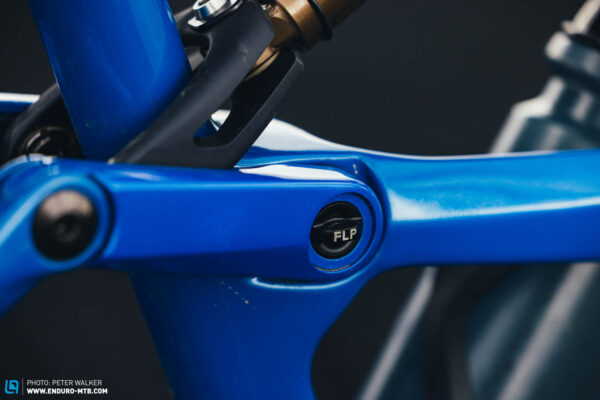

The cables are routed internally and run through the headset directly into the frame. The cable routing has been improved over the last Occam generation, with the new internal guides preventing chafing and making it easier to replace the rear brake line or shifter cable housing. With the new guides, you just have to push the cable into the port until it emerges at the other end. The rear bearings are sealed from the outside to prevent water and mud from penetrating, which is meant to increase the service life of the bearings.
Moreover, you can get Orbea to wrap your new Occam in a protective film, which is included in the price with all carbon models but costs an additional € 100 with all alloy models. If you decide to do so, you can choose between a plain, transparent tape or several design templates, with all options available in either a matt or a glossy finish. The protective film covers most of the down tube, top tube and chainstays, but only the lower section of the seat stays, leaving the upper side exposed to the elements – on our test bike, the inner seat stay already has visible tire marks! The frame tape is complemented by a generously sized chainstay protector, which prevents paint chips and chain slap. However, the shift cable emerges from the top of the chainstay, where it gets constantly hit by the chain – on our test bike, the cable housing is already damaged after a few days of testing. A small rubber mudguard above the main bearing prevents stones and debris from getting stuck in the gap between the main frame and swingarm.

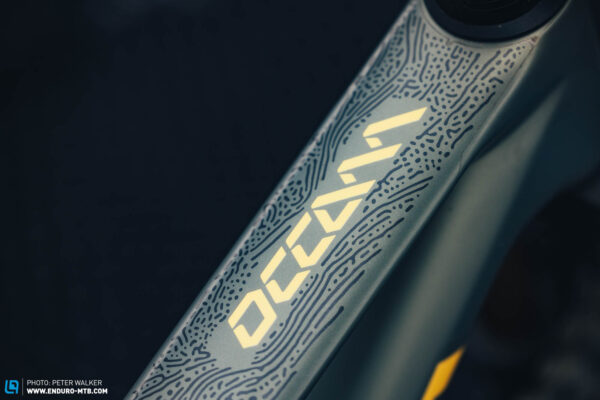
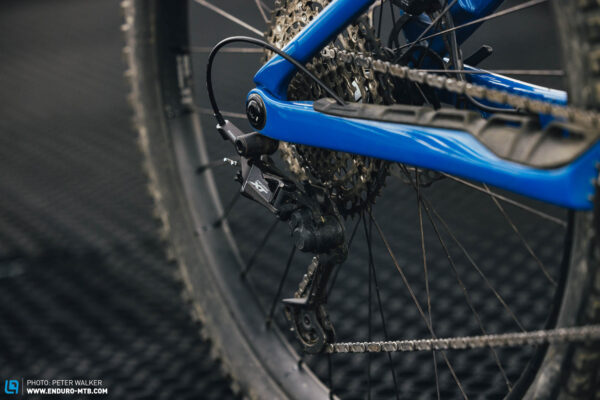
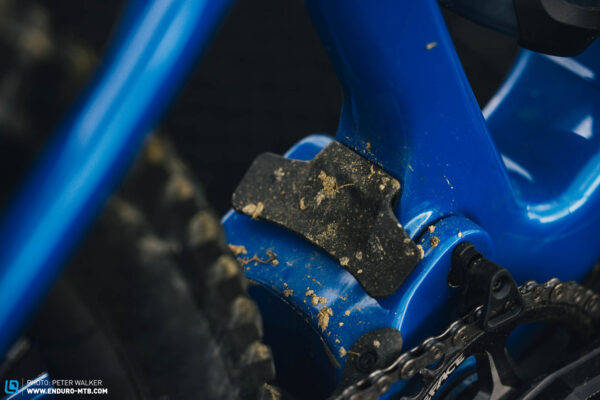
Models and spec variants of the new 2024 Orbea Occam
As already mentioned, Orbea launched two versions of the new Occam, the SL and LT. The ST has three carbon and three alloy variants, while the LT has three carbon but only two alloy variants. Unfortunately, Orbea haven’t yet released a top-spec variant of the alloy version, but you can build yourself a custom bike with top-tier components using the in the MyO configurator.
The H30 models are the gateway to the Occam dimension, retailing between € 2,799 (SL) and € 3,299 (LT), respectively. The entry level variants feature a solid spec consisting of FOX, Marzocchi and Shimano components. For both variants, the M-LTD variant is the flagship model, which retails at € 9,999 (SL) and € 7,999 (LT), respectively, and comes equipped with a new, electronic SRAM Transmission drivetrain. We tested the mid-range M10 carbon models, which in our opinion offer the best value for money, retailing at € 5,999 (both versions).
The spec of our Orbea Occam test bikes
Our two test bikes share a similar spec except for the suspension, dropper post, wheels and tires. Both bikes feature a Shimano XT drivetrain and matching XT four piston brakes. The SL has small 180 mm GALFER rotors front and rear, while the LT model has a bigger 200 mm disc at the front. However, the small 180 mm rotors tend to overheat quickly on long descents, so we recommend upgrading to bigger discs. For the cockpit, Orbea rely on their in-house component brand OQUO, combining a 40 mm stem with 800 mm carbon handlebars. That said, our SL test bike came with shorter 760 mm bars, which suit the character of the bike far better. Orbea also adapt both the stem and crank length to the respective frame size to ensure consistent handling across all sizes.
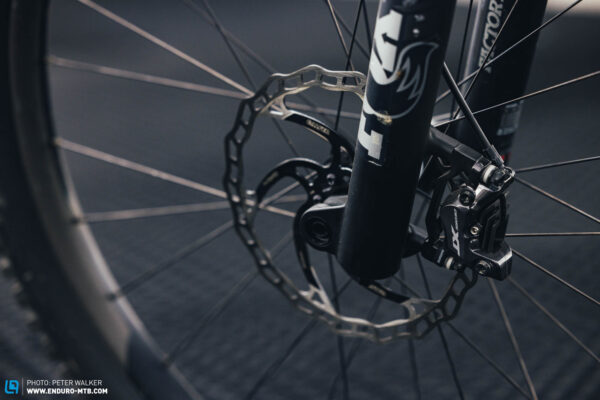

Both models in this test rely on FOX Factory suspension. The LT model employs a 36 mm GRIP2 fork and matching FLOAT X shock, while the SL variant combines a 34 mm fork with the lighter FIT4 damper and a FLOAT shock without piggyback, both of which can be locked out directly from the handlebars for more efficient pedalling performance. To round off the lightweight concept, Orbea spec the SL model with a FOX Transfer SL dropper post, which is lighter than its conventional counterpart but only offers two positions for its 100 mm of travel: slammed or fully extended. On the other hand, the OC Mountain Control dropper post of the LT model offers a whopping 230 mm adjustment range and can be inserted all the way into the frame – pure freedom of movement!

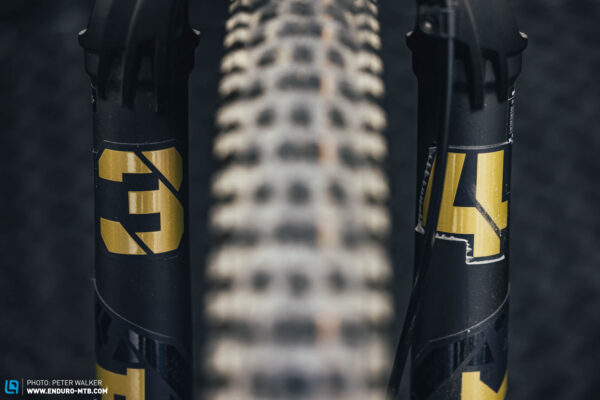
The wheels and tires, too, were chosen according to the intended use of the respective model. For the Occam SL, Orbea paired their in-house, lightweight OQUO Mountain Performance MP30 Team Carbon wheelset with some Schwalbe Wicked Will tires, featuring the soft rubber compound at the front and slightly harder Speedgrip compound at the rear. While this combination is fitting per se, both tires come in the lightweight but very puncture-prone Super Race casing. For more trail performance, we recommend upgrading to the more robust Super Trail casing. Our LT test bike, on the other hand, comes with a MAXXIS ASSEGAI at the front and MAXXIS Minion DHR II at the rear, both in the super-robust DH casing and soft MaxxGrip rubber compound. This combination ensures top downhill performance, but comes with a higher degree of rolling resistance uphill. That said, the standard M10 model comes with the thin EXO casing, which we recommend upgrading using the MyO configurator before ordering your bike.


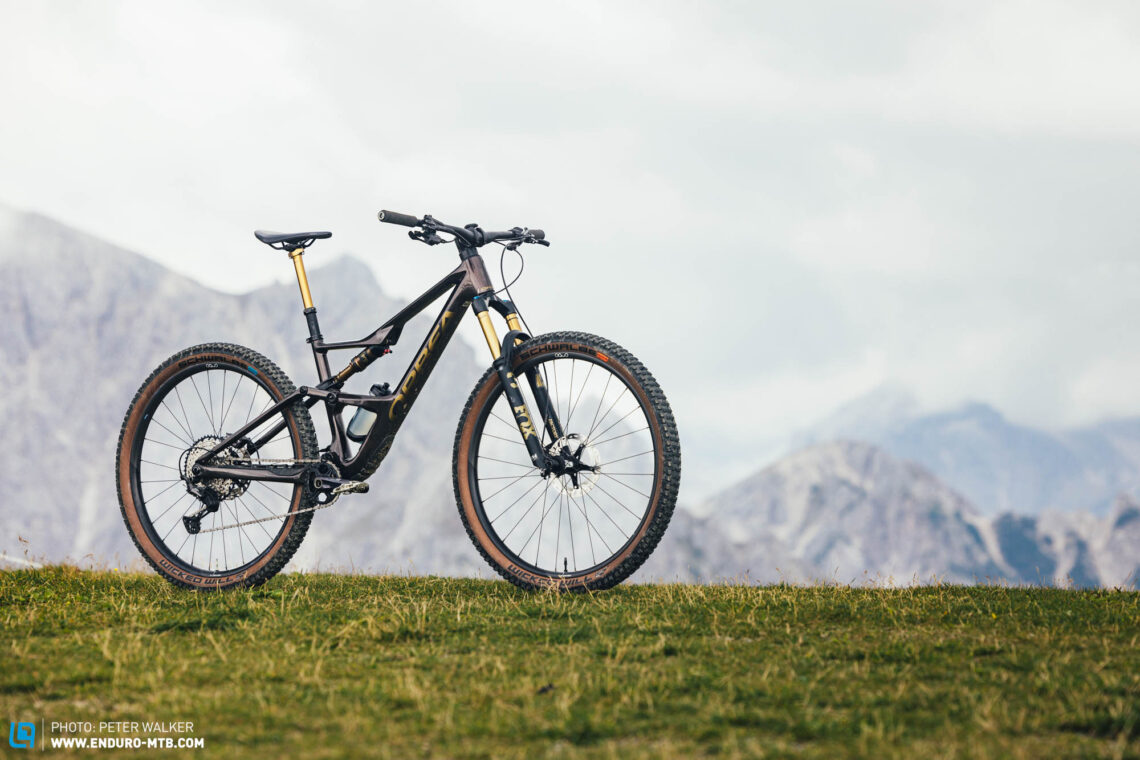
Orbea Occam SL M10
Specifications
Fork FOX 34 Factory FIT4 140 mm
Rear Shock FOX FLOAT Factory 140 mm
Seatpost Fox Transfer SL 150 mm
Brakes Shimano XT 180/180 mm
Drivetrain Shimano XT 1x12
Stem OC Mountain Control MC10 40 mm
Handlebar OC Mountain Control MC10 Carbon 760 mm
Wheelset Oquo Mountain Performance MP30TEAM Carbon 29"
Tires Schwalbe Wicked Will, Super Race, ADDIX Soft/Schwalbe Wicked Will, Super Race, ADDIX Speedgrip 2.4"/2.4"
Technical Data
Size S M L XL
Specific Features
storage compartment
integrated tool
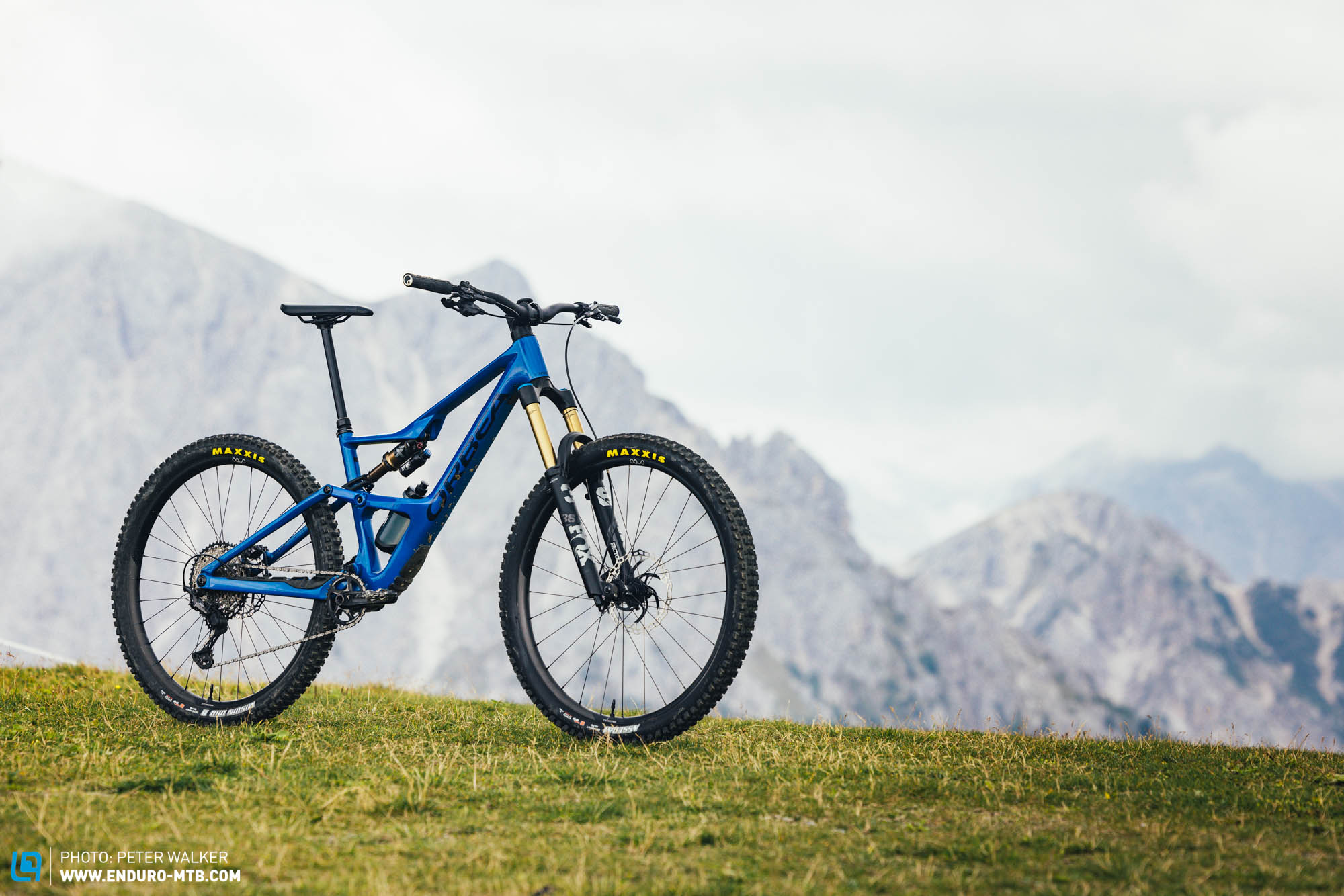
Orbea Occam LT M10
Specifications
Fork FOX 36 Factory GRIP2 160 mm
Rear Shock FOX FLOAT X Factory 150 mm
Seatpost OC Mountain Control MC21 230 mm
Brakes Shimano XT 200/180 mm
Drivetrain Shimano XT 1x12
Stem OC Mountain Control MC10 40 mm
Handlebar OC Mountain Control MC10 Carbon 800 mm
Wheelset Oquo Mountain Control MC32TEAM Au 29"
Tires MAXXIS ASSEGAI, MaxxGrip, DH Casing/Minion DHRll MaxxGrip, DH Casing 2.5"/2.4"
Technical Data
Size S M L XL
Specific Features
storage compartment
Flip Chip
integrated tool
The geometry of the new 2024 Orbea Occam
The Orbea Occam is available in four sizes, S to XL, offering a suitable option for riders between 150 and 200 cm tall. The frame features Orbea’s “Steep and Deep” design, which ensures a generous seat tube insertion depth, allowing you to run a 200 mm dropper post in all frame sizes – awesome! Moreover, the seat tube is nice and short across the board, which allows you to use the dropper’s full travel – a clear improvement over the previous Occam model.
The LT model also features a flip chip in the shock mount, which allows you to switch between a high and low setting: simply loosen the bolt and pull the frame up to switch into the higher position (or push it down to put it into the lower setting). Now just tighten the bolt and you’re done! Thanks to this simple, intuitive system, you can easily switch between the high and low settings on the trailside – and you can do this with the 6mm Allen Key that hides in the rear thru axle. Furthermore, the long-travel Occam model features a system alignment system, which ensures that the shock is always perfectly centred, thus reducing wear on the suspension hardware.

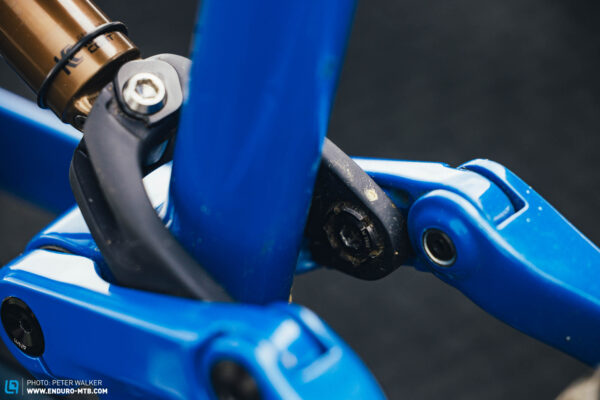
Orbea Occam SL
| Size | S | M | L | XL |
|---|---|---|---|---|
| Top tube | 570 mm | 596 mm | 622 mm | 649 mm |
| Seat tube | 405 mm | 415 mm | 430 mm | 460 mm |
| Head tube | 95 mm | 100 mm | 110 mm | 120 mm |
| Head angle | 65.5° | 65.5° | 65.5° | 65.5° |
| Seat angle | 78° | 78° | 78° | 78° |
| Chainstay | 440 mm | 440 mm | 440 mm | 440 mm |
| BB Drop | -37 mm | -37 mm | -37 mm | -37 mm |
| Wheelbase | 1.191 mm | 1.218 mm | 1.245 mm | 1.278 mm |
| Reach | 440 mm | 465 mm | 490 mm | 515 mm |
| Stack | 611 mm | 615 mm | 624 mm | 633 mm |
Orbea Occam LT in low setting
| Size | S | M | L | XL |
|---|---|---|---|---|
| Top tube | 572 mm | 598 mm | 625 mm | 653 mm |
| Seat tube | 405 mm | 415 mm | 430 mm | 460 mm |
| Head tube | 95 mm | 100 mm | 110 mm | 120 mm |
| Head angle | 64° | 64° | 64° | 64° |
| Seat angle | 77° | 77° | 77° | 77° |
| Chainstay | 440 mm | 440 mm | 440 mm | 440 mm |
| BB Drop | -36 mm | -36 mm | -36 mm | -36 mm |
| Wheelbase | 1.200 mm | 1.227 mm | 1.257 mm | 1.287 mm |
| Reach | 430 mm | 455 mm | 480 mm | 505 mm |
| Stack | 621 mm | 625 mm | 635 mm | 644 mm |


The new 2024 Orbea Occam on the trail
When making your way to the trailhead, both bikes share a very similar pedalling position, which is relatively upright and relaxed, without too much pressure on your hands. The rear suspension is pedal neutral, ensuring an efficient climbing performance even without activating the climb switch. On steeper climbs, the front wheel always remains planted on the ground, implementing steering input willingly without requiring you to shift your weight forward. However, the two bikes already show clearly distinct handling characteristics. The shorter travel Occam SL has a much firmer ride, and is a much livelier climber, moving incredibly fast with the fork and shock locked out.
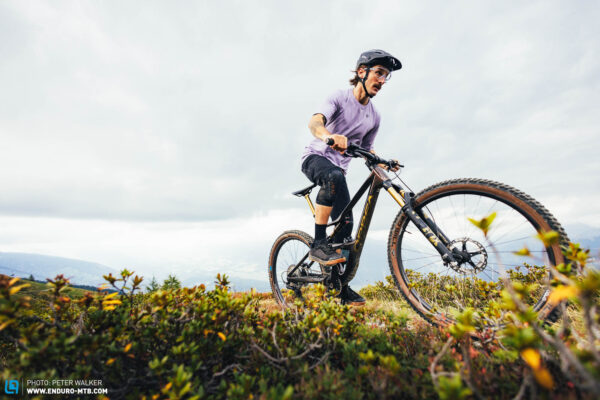
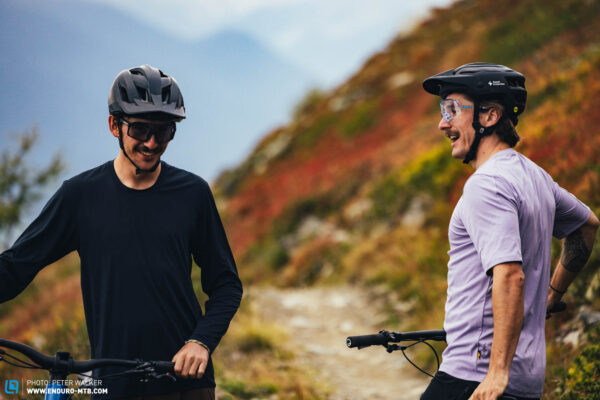
Riding downhill, the two bikes feel quite similar at first, integrating you nicely within the frame, with the weight evenly distributed between the front and rear. Regardless of which version you’re riding, the Occam has intuitive handling and makes you feel at ease from the get-go. However, the similarities quickly fade, and it becomes evident that while these twins might look similar, they have very distinct characters. The Occam SL is firmer and more direct, which can be both a blessing and a curse, depending on what you’re looking for. The direct handling allows you to carve through tight corners at Mach 10 and to generate speed by pumping through flowing trail sections. When the trail gets rougher, however, the Occam SL quickly reaches its limits, requiring a clean riding style and good line choice to make your way back down into the valley. The shallow profiled tires struggle to generate traction on loamy terrain but hold up well on hardpack trails.

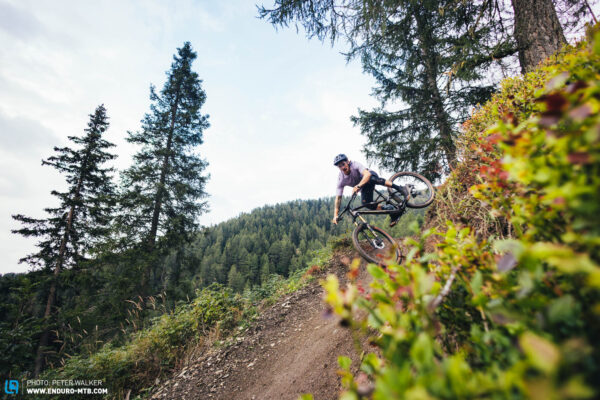
During testing, this made for a fun game of cat and mouse between the two Occam models, with the SL breathing down the LT’s neck in fast corners but losing ground again on rougher trail sections. The long-travel Occam also provides plenty of support, making it easy to pump your way through the trail. Unlike its short-travel counterpart, however, it shows its strength on natural trails, where it feels significantly more composed, thus inspiring far more confidence and encouraging you to leave your fingers off the brakes. The Occam LT also feels more comfortable in steep terrain, without the fear of flying over the bars. The rear suspension responds sensitively and generates tons of traction but still offers enough support to prevent hard bottom-outs with bigger impacts, meaning that the Occam is perfectly suitable for the odd bike park mission. When the trail gets too rough, however, even the long-travel LT model reaches its limits – but then it makes sense to take a closer look at Orbea’s enduro bike, the Rallon.
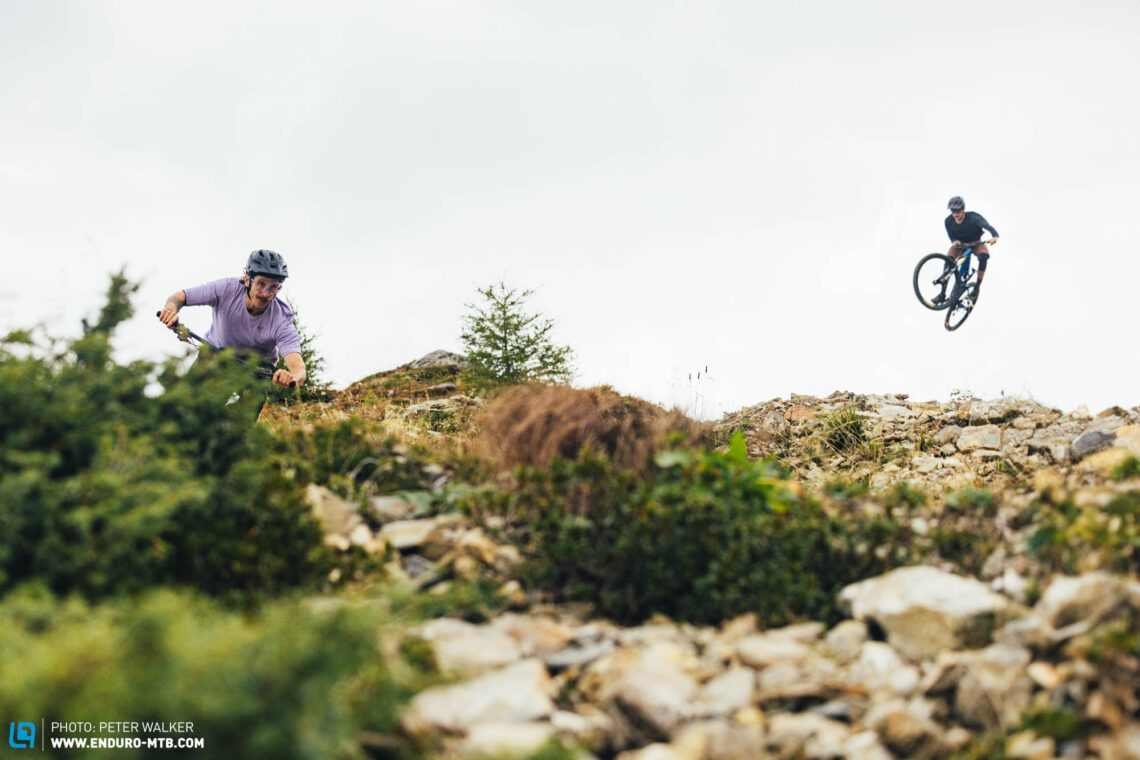
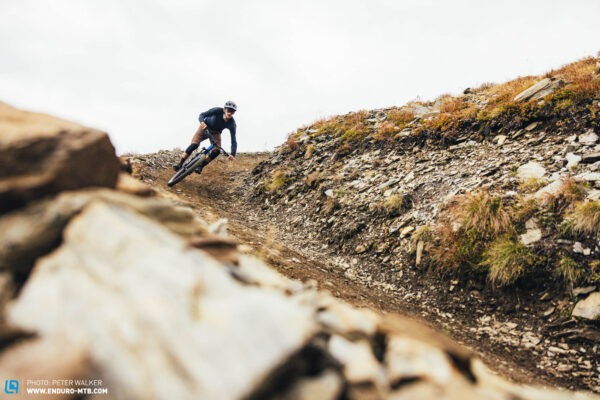

The Orbea Occam LT with air or coil shock
Depending on the spec variant, the Orbea Occam LT is available with both air and coil shock options. With its air spring, the FOX FLOAT X is quick and easy to set up with a shock pump and provides tons of pop on the trail, proving the optimal choice for all jib masters out there who love to play with the trail features. With the FOX DHX coil shock, on the other hand, you’ll have to find the right spring rate first to suit your body weight and riding style. Our 75 kg test rider got on well with a 475 lb spring. With the coil shock, the Occam’s rear suspension is noticeably firmer and inspires even more confidence as a result. At the same time, the coil offers enough support to pump through berms and rollers, albeit with a little less pop, which comes at the expense of the bike’s agility. That said, the coil shock ensures a more balanced ride on the trail.

Orbea Occam SL or LT? What rider should pick which bike?
With two models to choose from, the 2024 Orbea Occam covers a wide range of applications. The SL variant is the ideal choice for epic backcountry expeditions and yet provides a decent level of comfort and fun on the trail. With its intuitive handling and excellent rear suspension, the LT version is a capable, reliable all-rounder and fun companion for a wide range of trails, regardless of your skillset.
Our conclusions about the 2024 Orbea Occam
The new Occam stands for evolution rather than revolution. The latest iteration of Orbea’s trail bike inherits the frame silhouette with asymmetric cross brace from its predecessor, but speaks a more modern design language, which is also reflected in the geometry. In addition, there are several useful frame details, like the integrated storage compartment and hidden multitool. By using two travel configurations on the same frame, Orbea managed to create two very different bikes with clearly defined areas of application. Both bikes are strong all-rounders that skilfully combine touring suitability, comfort and trail performance.
Tops
- Clever, functional frame details
- Versatile frame platform enables a wide range of applications
- Excellent trail performance
- Great all-rounder potential
Flops
- No alloy top-spec variants
- Chain damages the rear derailleur cable
For more information, visit Orbea’s website.
Did you enjoy this article? If so, we would be stoked if you decide to support us with a monthly contribution. By becoming a supporter of ENDURO, you will help secure a sustainable future for high-quality mountain bike journalism. Click here to learn more.
Words: Simon Kohler Photos: Peter Walker




